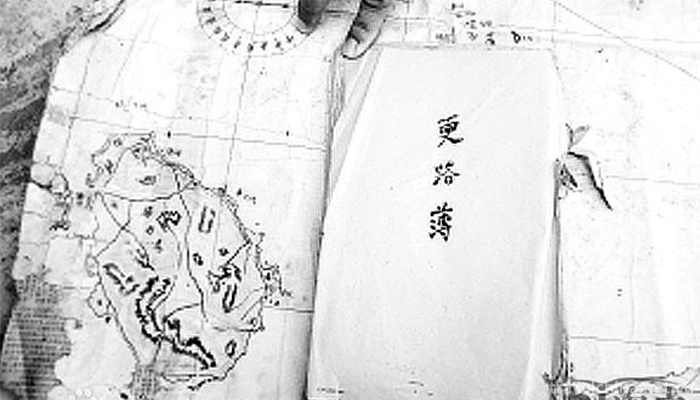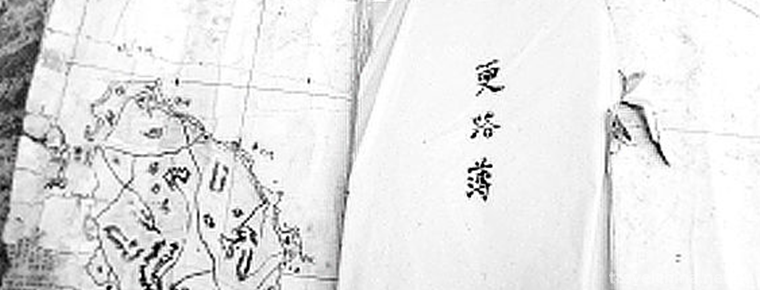South China Sea Channel
South China Sea Channel
South China Sea Channel is a traditional folk culture in Wenchang City, Hainan Province. Local fishermen have compiled their own "secret book" for navigation since ancient times. It is a handbook booklet to record navigation knowledge or a hand-drawn navigation book. In Wenchang, Qionghai and other places, fishermen's biography of "Geng Lu" can be traced back to the Ming and Qing Dynasties. A compass plus a copy of "Geng Lu" enables Chinese fishermen to go to the South China Sea smoothly without accurate navigation icons and satellite positioning systems, and to trade in the South China Sea. It is a necessary chart for every captain and the route, essentials, meteorological flow recorded in the chart, not to mention how many fishermen have exchanged their blood for "life route". It provides strong evidence to prove that Xisha and Nansha Islands belong to the territorial sea of China.
On June 14, 2008, the South China Sea Channel, declared by Wenchang City, Hainan Province, was approved by the State Council and listed in the second batch of national intangible cultural heritage lists.
historical origin
"Nanhai Geng Lu Jing" also has the names of "Nanhai Road Jing", "Nanhai Timing Jing Bit", "Southwest Sha Geng Book", "Downwind Deli", "Note East and Beihai Geng Road Book", "Waterway Book to West and Nansha". Different names have different manuscripts and oral expressions.
The South China Sea islands and reefs were first discovered and developed by the Chinese people. Historical records show that 7,000-3,000 years ago, a branch of the "Luoyue people" from southern China came across the sea and became a living ancestor of Hainan Island, later known as the Li nationality, indicating that people had mastered the skills of crossing the sea at that time.
As far back as the Qin and Han Dynasties, Chinese ancestors had already carried out maritime trade and fishery production activities in the South China Sea. Since the Han Dynasty, China has opened the "Maritime Silk Road" to communicate with many countries in Southeast Asia, South Asia, Oceania, Africa and Europe. Hainan Island and the South China Sea Islands are necessary places. Numerous merchant ships, full of traditional Chinese goods, sailed away, while returning to many exotic treasures abroad, maritime trade came into being at the historic moment.
According to experts'textual research, "Nanhai Geng Lu Jing" was formed in the Ming Dynasty. Today, Hainan fishermen are still enriching "Nanhai Geng Lu Jing" in practice.
The South China Sea islands and reefs are scattered, which are regarded as dangerous roads by navigators. In the central part of the Nansha Islands, there is a proverb that "three lives are lost by sailing on water". Generations of captains have passed on from mouth to mouth, taking notes, sorting out navigation technology, route currents and island reefs, which is the crystallization of fishermen's wisdom --- the South China Sea Passage.
There are two kinds of Nanhai Geng Lu Jing, one is handed down in the form of manuscripts, commonly known as Nanhai Geng Lu Ji, and the other is handed down orally, commonly known as "Geng Lu Zhuan". Mainly distributed in Wenchang and Qionghai coastal areas. Second, Haikou City, Lingshui Li Autonomous County, Wanning City, Sanya City, Lingao County and other port and coastal fishing villages.
The so-called "more routes, more routes, more routes" is actually the "secret book" of navigation compiled by fishermen for their own use since ancient times. It is a manuscript brochure to record navigation knowledge, or a hand-drawn chart of navigation, which is a necessary chart for every captain.
Folklore activity "Sacrificing Brothers Off the Sea Ceremony" is a series of folk custom celebrations such as "Sacrificing 108 Brothers Off the Sea" and a ceremonial that fishermen in Qionghai must hold before voyage. The ceremony is popularly known as "making good fortune" in order to make the voyage smooth and peaceful.
Inheritance and Protection
Value Significance
The value and significance of the book are as follows:
The place names recorded in Geng Lu Jing of South China Sea Channel are named by Hainan fishermen and have been used up to now. They have strong Hainan dialect characteristics, such as replacing islands and islands with "shi" and referring to hidden reefs with "sand" or "line", which fully proves the long history of Hainan residents'development and construction of Xisha and Nansha, and proves that Nansha has been the territory of China since ancient times; Geng Lu Jing of South China Sea Channel 》 The scope of navigation recorded in the book is different from that in the general nautical needle scriptures. It focuses on the Xisha and Nansha sea areas. There are not many records about the overseas alternative routes. The hydrological and meteorological information recorded in the book, such as routes, reef landforms and sea conditions, as well as waves, tides, wind directions and storms, are valuable historical materials for the study of China's navigation history and the development history of the South China Sea.
"The South China Sea Channel is more accessible" is the historical witness of the ancient Qionghai fishermen's development of Xisha and Nansha Islands, which provides strong evidence to prove that Xisha and Nansha Islands belong to the territorial sea of our country. "South China Sea Channel More Route" is a practical guide for the navigation of the "Silk Road on the Sea", which has a precious historical value and significance for the study of the history of overseas Chinese, foreign trade and the development history of the South China Sea.
Protection Planning
The protection of Geng Roadbook, an important cultural relic of the South China Sea in Hainan Province, has attracted many attentions. In view of the lack of successors of the "Geng Lu Book" heritage, Wenchang and Qionghai cities in Hainan Province have drawn up a "three-year plan" for its salvage protection, in-depth searching for old fishermen familiar with the "Geng Lu Book", increasing subsidies for the successors of the "Geng Lu Book", establishing institutes and special databases, etc., to prevent them from dying with the progress of navigation technology.
"Nanhai Channel More Passage" is popular in the eastern coastal areas of Hainan. Its protection unit is the cultural halls of Wenchang and Qionghai in Hainan. At present, the project inheritance and dynamic protection are facing great difficulties. There are few successors and the collection of objects is very difficult. It is urgent to protect "Nanhai Channel More Passage". In order to save this precious cultural heritage, Wenchang and Qionghai have already done so. Start and implement the "South China Sea Channel More Passage" project protection plan.
data base
The plan puts forward that we should continue to search for old fishermen who are familiar with "more routes", record relevant information about "more routes of South China Sea Channel" in oral form by scientific means, and use multimedia means such as text, recording and video recording to record authentically, systematically and comprehensively the experience of different insiders and inheritors when they go to sea, and establish a special database.
Inheritor
In terms of enhancing the cultivation of inheritors, we should form a system of inheritance of "more routes" in the South China Sea by means of subsidizing "more routes" apprentices and setting up heritage centers, and encourage "more routes" to be disseminated and inherited among the public.


-
1.Sanxianshan Scenic Area
Sanxianshan Scenic Area is located in the northern end of Penglai City, Shandong Province, along the Yellow Sea. It is adjacent to Baxian Cross-Sea Scenic Area in the west,
Time 2018-12-17 -
2.Danxia Chishui
Danxia National Geopark in Chishui City, Guizhou Province, is located in the southern edge of Sichuan Basin, close to the northern foot of Daloushan Mountain in northern Guizhou Province and the weste
Time 2019-01-05 -
3.Museum of Xinjiang Uygur Autonomous Region
The Museum of Xinjiang Uygur Autonomous Region, located at No. 132 Northwest Road, Urumqi City, is a provincial comprehensive geographic museum.
Time 2019-02-25 -
4.Spinach with Eight Delicacies
Babao spinach is a traditional Shandong dish, which belongs to Shandong cuisine. It is rich in color, bright, delicious, light and refreshing. In addition to spinach, Babao spinach is also equipped wi
Time 2019-03-25 -
5.Traditional medicine
Traditional medicine, a list item of intangible cultural heritage. Article 21 of the Constitution stipulates that the State shall develop medical and health undertakings, modern medicine and tradition
Time 2019-04-21 -
6.Guan Suo Opera
Guansuo Opera is a kind of local opera, which belongs to the ancient Nuo Opera. It is only found in Xiaotun Village, Yangzong Town, Chengjiang County, Yunnan Province.
Time 2019-05-01 -
7.memorial ceremony for Confucius
The sacrifice to Confucius is a grand sacrifice ceremony held mainly in Confucian temples for the sake of revering and remembering Confucius, which is a miracle in the history of world sacrifice and h
Time 2019-05-05 -
8.Lu Opera
Luju opera, formerly known as "pour seven operas", is commonly known as "small opera", "prayer and sacrifice opera", "small pour opera", "small barbaric op
Time 2019-05-15 -
9.Jockey Club
The horse race held every June in the Tibetan calendar is a grand traditional festival in the northern Tibetan grassland, also known as the "Grassland Festival", which lasts from 5 to 15 day
Time 2019-06-12 -
10.Shengzhou Blows
Shengzhou blowing is one of the main components of "gong and drum in eastern Zhejiang". "Zhedong Gong and drum" generally refers to the traditional folk instrumental music in easte
Time 2019-06-14 -
11.Dong Zhongshu
Dong Zhongshu (179 BC - 104 years ago), Guang Chuan (Hebei Jingxian County southwest, Jingxian County, Gucheng, Zaoqiang three counties junction) people, the Western Han Dynasty. philosopher emperor j
Time 2019-09-07 -
12.Neijiang cultural undertakings
By the end of 2019, there are 121 performing arts venues in Neijiang City, including 6 cultural venues. There are 5 museums, 5 cultural relics protection and management institutions, 7 national key cultural relics protection units, 42 provincial cultural relics
Time 2020-12-16